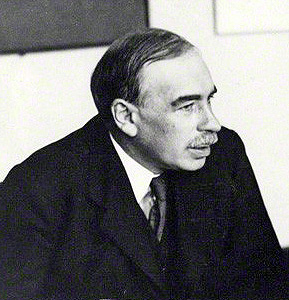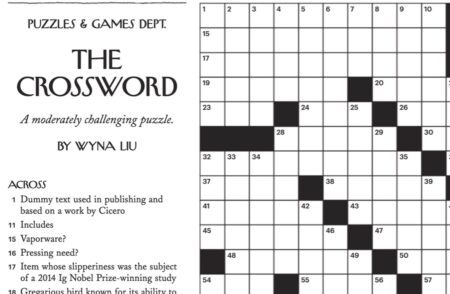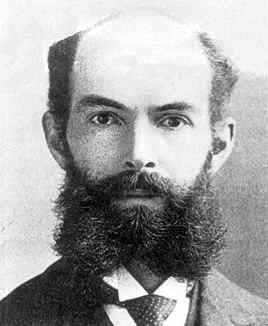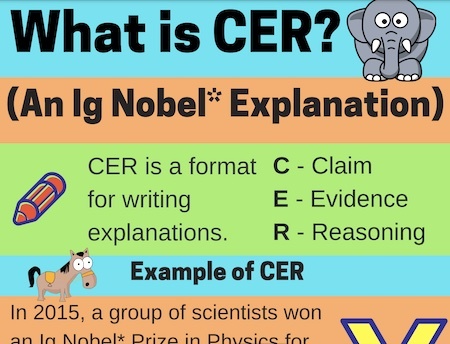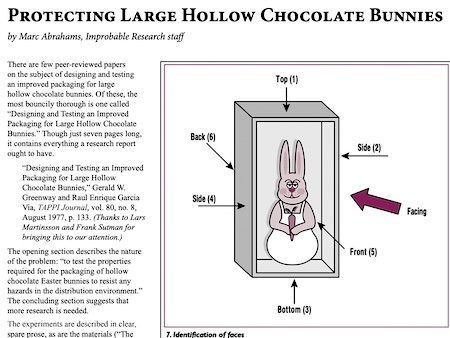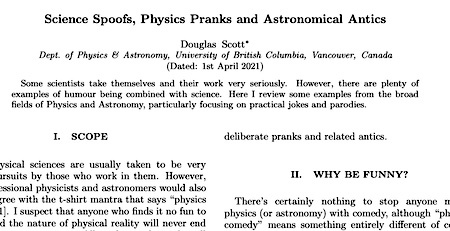Marc Abrahams's Blog, page 83
April 12, 2021
Do looks matter for an academic career in economics? [study]
According to a new paper from the Centre for Economic Policy Research, the answer is (a robust) ‘yes’.
We document appearance effects in the economics profession. Using unique data on PhD graduates from ten of the top economics departments in the United States we test whether more attractive individuals are more likely to succeed. We find robust evidence that appearance has predictive power for job outcomes and research productivity. Attractive individuals are more likely to study at higher ranked PhD institutions and are more likely to be placed at higher-ranking academic institutions not only for their first job, but also for jobs as many as 15 years after their graduation, even when we control for the ranking of PhD institution and first job. Appearance also predicts the success of research output: while it does not predict the number of papers an individual writes, it predicts the number of citations for a given number of papers, again even when we control for the ranking of the PhD institution and first job. All these effects are robust, statistically significant, and substantial in magnitude.
You can download the paper here from the UK based Centre for Economic Policy Research for GBP £6.00.
Or, if you prefer, you download it here, for free (from the same organisation).
Note: The photo (not featured in the study) depicts The Right Honourable John Maynard Keynes, 1st Baron Keynes CB, FBA, (1883–1946) who was, some say, one of the most influential economists of the 20th century.
Research research by Martin Gardiner

April 11, 2021
Podcast Episode #1063: “And Now, a Needle in the Rectum”
In Podcast Episode #1063, Marc Abrahams shows an unfamiliar research study to statistical geneticist Chris Cotsapas. Dramatic readings and reactions ensue.
Remember, our Patreon donors, on most levels, get access to each podcast episode before it is made public.
Chris Cotsapas encounters:
“And Now, a Needle in the Rectum,” Naresh K. Soni, Ashwini Gupta, and Narayan S. Shekhawat, Indian Journal of Gastroenterology, vol. 16, no. 2, April 1997, pp. 77–8.
Seth Gliksman, Production Assistant
Available on Spotify, Apple Podcasts, Overcast, Google Podcasts, AntennaPod, BeyondPod and elsewhere!

April 9, 2021
Ig Nobel Prizes in The New Yorker Crossword Puzzle
The Ig Nobel Prizes have again wandered into a crossword puzzle, this time as a clue in the April 5, 2021 puzzle in The New Yorker. The clue for one of the across words is:
17 Item whose slipperiness was the subject of a 2014 Ig Nobel Prize-winning study
By our lazy count, this is the fourth time the Ig Nobel Prizes have appeared in a major crossword puzzle (if there is such a thing as a major crossword puzzle) in an English-language publication. The Week used it in their puzzle on October 19, 2015. The New York Times used it in their puzzle on December 20, 2020. The Wall Street Journal used it in their puzzle January 23, 2021
The Igs have also been an answer on the Jeopardy! TV program eight times or so.
(Thanks to Miriam Bloom for bringing this to our attention.)

April 8, 2021
New Look at Some Old Bearded Mathematicians
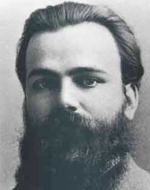 “Maxime Bôcher [pictured here], with his square beard and squarer shoes, was presiding. In the back of the room, with a different beard but equal dignity, William Fogg Osgood was counseling a student.”
“Maxime Bôcher [pictured here], with his square beard and squarer shoes, was presiding. In the back of the room, with a different beard but equal dignity, William Fogg Osgood was counseling a student.”
—from George David Birkhoff and His Mathematical Work, by Marston Morse, Bulletin of the American Mathematical Society, May 1946, page 357.
Here is a photograph of William Fogg Osgood’s beard, with William Fogg Osgood:
We have not managed to find a photograph of Maxime Bôcher’s shoes.

April 6, 2021
Usefulness, for Teachers, of Ig Nobel Prizes
April 5, 2021
Podcast Episode #1062: “Happiness from Painful Insect Stings”
In Podcast Episode #1062, Marc Abrahams shows a poetical research paper — about insect-sting pain — to QI Elves James Harkin, Dan Schreiber, Anne Miller, Steve Colgan, and Alex Bell. Dramatic readings and reactions ensue.
Remember, our Patreon donors, on most levels, get access to each podcast episode before it is made public.
The QI Elves encounter:
‘The Sting of the Wild‘ by Justin O. Schmidt, Johns Hopkins Press, 2016. ISBN: 9781421419282.
Seth Gliksman, Production Assistant
Available on Spotify, Apple Podcasts, Overcast, Google Podcasts, AntennaPod, BeyondPod and elsewhere!

The consequences of inconsequentialities [study]
 People occasionally misplace seemingly inconsequential things – gloves, trainers, scarfs etc etc. But perhaps the sociological implications of misplaced objects may not have received as much scholarly attention as they deserve? Bearing in mind that :
People occasionally misplace seemingly inconsequential things – gloves, trainers, scarfs etc etc. But perhaps the sociological implications of misplaced objects may not have received as much scholarly attention as they deserve? Bearing in mind that :
“Especially for the purposes of grant applications, researchers must demonstrate how these objects have impacts that go beyond their immediate spatialities to affect a significant proportion of the population “
Despite the difficulties, there are, nevertheless, academic papers examining just such inconsequentialities. One author was inspired to write one for the journal Space and Culture after finding a lost mitten in Salford, UK.. The paper :
“ . . . explores the ephemeral, delicate, and often superficial materiality of these objects of rupture relative to a flow-optimized urban landscape. “
With the observation that :
“ The consequences of inconsequentialities may be more profound than we might think.“
See: Inconsequential Materialities: The Movements of Lost Effects Space and Culture ,Volume: 12 issue: 1, page(s): 95-115

April 2, 2021
Protecting Large Hollow Chocolate Bunnies
“Protecting Large Hollow Chocolate Bunnies” is a featured article in the special Chocolate issue (volume 27, number 1) of the Annals of Improbable Research. This article is free to download:
The article begins: “There are few peer-reviewed papers on the subject of designing and testing an improved packaging for large hollow chocolate bunnies. Of these, the most bouncily thorough is one called “Designing and Testing an Improved Packaging for Large Hollow Chocolate Bunnies.” Though just seven pages long, it contains everything a research report ought to have….”

A Scottian History of Science Spoofs
April 1, 2021
Vibrating an Earthworm [Ig Informal Lecture]
Here is the Ig Informal Lecture by the winners of the 2020 Ig Nobel Physics Prize.
The Ig Nobel Prizes honor achievements that make people LAUGH, then THINK. In the Ig Informal Lectures, some days after the ceremony, the new Ig Nobel Prize winners attempt to explain what they did, and why they did it. [In non-pandemic years, the lectures happen at MIT, in Cambridge, Massachusetts, two days after the Ig Nobel Prize ceremony. But in the pandemic year 2020, it’s all happening online.]
The 2020 Ig Nobel Prize for Acoustics was awarded to Ivan Maksymov and Andrey Pototsky, for determining, experimentally, what happens to the shape of a living earthworm when one vibrates the earthworm at high frequency. They documented that research, in this study:
“Excitation of Faraday-like body waves in vibrated living earthworms,” Ivan S. Maksymov and Andrey Pototsky, bioRxiv 10.1101/868521, December 8, 2019.Unleashing the LecturesWe are releasing The Ig Informal Lectures, one at a time, here on www.improbable.com, and on YouTube.

Marc Abrahams's Blog
- Marc Abrahams's profile
- 14 followers


